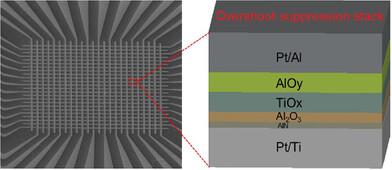Recent Progress in Memrsitor Array Structures and Solutions for Sneak Path Current Reduction
引用次数: 0
Abstract
Memristors have diverse potential for improving data storage through linear memory control and synaptic operation in AI and neuromorphic computing. Prior research on optimizing memristors in next‐generation devices has generally indicated that emerging arrays and vertical structures can improve memory density, although special fabrication steps are required to realize improved operation. Until now, many obstructions, such as the sneak path current and forming processes from the initial device in array structure operation at the device level, have limited the development of array‐based memristor devices for further progressing circuits and integrated design. In this paper, memristor array studies are examined that have suggested solutions for sneak path current and forming operation problems at the device level. Ultimately, representative solutions are proposed to progress memristors into array structures by introducing the latest research on one diode‐one RRAM (1D1R), one selector‐one RRAM (1S1R), overshoot suppressed RRAM (OSRRAM), self‐rectifying cell (SRC), charge trap memory (CTM) and their applications. Additionally, essential details demonstrating the practical implementation of these devices in crossbar array memory are investigated. Finally, the advantages and perspectives of these array‐based memristor solutions are summarized.

降低潜行路径电流的 Memrsitor 阵列结构和解决方案的最新进展
在人工智能和神经形态计算领域,忆阻器具有通过线性存储器控制和突触操作改进数据存储的多种潜力。关于在下一代设备中优化忆阻器的先前研究普遍表明,新出现的阵列和垂直结构可以提高存储器密度,但需要特殊的制造步骤才能实现更好的操作。迄今为止,许多障碍,如器件级阵列结构运行中初始器件的潜行路径电流和形成过程,限制了基于阵列的忆阻器器件的发展,无法进一步推动电路和集成设计的进步。本文探讨了忆阻器阵列研究,提出了器件级潜入路径电流和成型操作问题的解决方案。最后,通过介绍一二极管一 RRAM (1D1R)、一选择器一 RRAM (1S1R)、过冲抑制 RRAM (OSRRAM)、自矫正单元 (SRC)、电荷阱存储器 (CTM) 及其应用的最新研究成果,提出了将忆阻器发展成阵列结构的代表性解决方案。此外,还研究了这些器件在交叉排阵列存储器中实际应用的基本细节。最后,总结了这些基于阵列的忆阻器解决方案的优势和前景。
本文章由计算机程序翻译,如有差异,请以英文原文为准。
求助全文
约1分钟内获得全文
求助全文

 求助内容:
求助内容: 应助结果提醒方式:
应助结果提醒方式:


